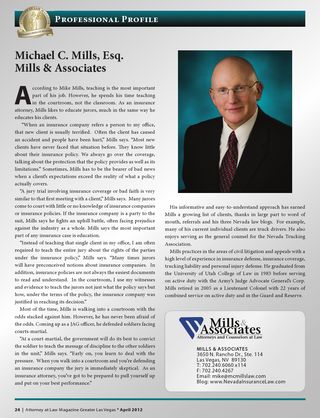There are many types of damages. You probably know some of these types by name: general damages; special damages; consequential damages; exemplary or punitive damages; liquidated damages; nominal damages; statutory damages; and treble damages. Each type of damage has own elements, scope and complexity.
However, the type of damages that most people think about where civil lawsuits are involved is compensatory damages in the form of money. The basic purpose behind these monetary damages is to compensate the injured party for the loss that is the subject of the suit.
As the Nevada Supreme Court explained in Hornwood v. Smith’s Food King No. 1, 107 Nev. 80 (1991), compensatory damages are awarded to attempt to make the aggrieved party whole. The court said that any loss actually or proximately caused by the negligence of another can be included under this category, including medical and hospital bills, ambulance charges, loss of wages, property repair, replacement costs or loss of use.
At first blush, this description of the purpose for damages seems easy to follow. If A negligently breaks B’s window with a baseball, then the damages are the cost of fixing the window. However, if B’s window was in a hothouse full of rare orchids which were killed as a result of the broken window, the damages could include the loss of the window and the value of the orchids. If the loss of the flowers put B out of business, the loss could also include the value of the loss of B’s entire business.
The issue of damages is relatively simple when the loss is one of property or services that are readily valued. However, the calculation of damages is much more difficult when the loss is one not readily counted.
Many people have pointed out that money is an inadequate way to compensate someone for the loss of a loved one or for the pain and suffering that someone might have through the remainder of their lives due to a permanent injury. However inadequate monetary damages may be, the American system of jurisprudence lacks any other agreed upon method to make such compensation.
When the damages are meant to compensate for pain and suffering or emotional distress the appropriate amount of money can be particularly difficult to reach. A longer explanation of these “general damages” is set out in the next article in the series, Damages 102.
Additional Information related the issue of Damages in Nevada Litigation can be found HERE. We at Mills & Associates also encourage you to explore the “Categories” listed in the right column for related topics.
If you have any questions about Nevada litigation strategies or damages, feel free to contact me at 702.240.6060 or by email.
— Mike Mills
 Follow
Follow Email
Email


